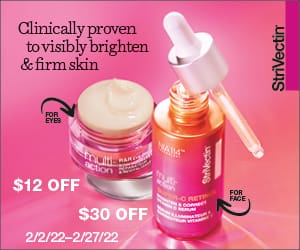
Vision quest
Identifying and treating age-related macular degeneration
Age-related macular degeneration (AMD), a leading cause of blindness, affects approximately 11 million people in the United States and 170 million worldwide, according to the National Institutes of Health. AMD is a progressive disease with symptoms (see “Vision symptoms”) usually appearing from age 50 onward.
A small portion of the retina, “the macula provides us with our central vision, acuity and color detection, and requires the highest level of metabolic function in our body,” says Matthew Levine, a spokesperson for the American Macular Degeneration Foundation (AMDF). “In AMD, something goes wrong with clearing the byproducts of that process and debris starts to accumulate, eventually pushing up the thin layer of cells of the retina, creating distortion.”
There are two types of AMD: wet and dry. The dry form is more common, representing 90% of the cases in the U.S., with approximately 10% of those cases progressing to the wet form, according to the AMDF. That form, says Dr. Emily Chew, deputy clinical director of the National Eye Institute, results in the growth of new blood vessels “which can suddenly rupture, damaging your central vision.”
Risk factors
At this time there is no clearly definable cause of AMD, but some factors are known to increase the risk. More women are affected with AMD. White Americans are more likely to develop this disease than other ethnic groups. Current research points toward possible genetic factors in the development of AMD. Chew says, “With a family history of AMD, it’s vital to start screening early.”
Smoking, obesity and high blood pressure can also increase the risk of AMD, as can diet. Some types of fats, for example, such as trans fats, palm oil, lard and margarine, can trigger inflammation, increasing the risk of AMD.
Diagnosis and treatment
If you have a family history of AMD, it’s vital to have your and your children’s eyes examined by an ophthalmologist early on and regularly throughout life, says Chew.
To check for macular degeneration, a dilated eye exam is necessary. Make an appointment with an optometrist or an ophthalmologist, who can perform a complete eye exam.
Currently, there are only a few treatments for late forms of dry AMD, including AREDS2 supplements (see “Lifestyle changes” below).
Research into the wet form has demonstrated that treatments involving injections into the eye have revolutionized the outcomes for afflicted patients. These injections, Chew says, especially when given early in the disease, when it presents with good vision, are effective.
“It does not slow or stop, or restore, vision loss in all cases,” Chew says. “But in some cases we have been able to restore vision, and the patients who have good vision at the time of treatment do much better. In fact, we have patients who are 20/20 still after four years of injections, and some even longer.”
“Being diagnosed with AMD is going to be an emotional experience,” adds Levine. “Getting injections into your eye on a regular basis is not a pleasant thing, but it’s critical to keep up treatments or the faulty blood vessel formation can reoccur. This condition is not dissimilar to diabetes; it takes regular and continual management.”
“Use the information available to check your own vision,” says Chew. “Know your family history and, above all, follow a healthy lifestyle. Remember: We are what we eat and how we live.”





